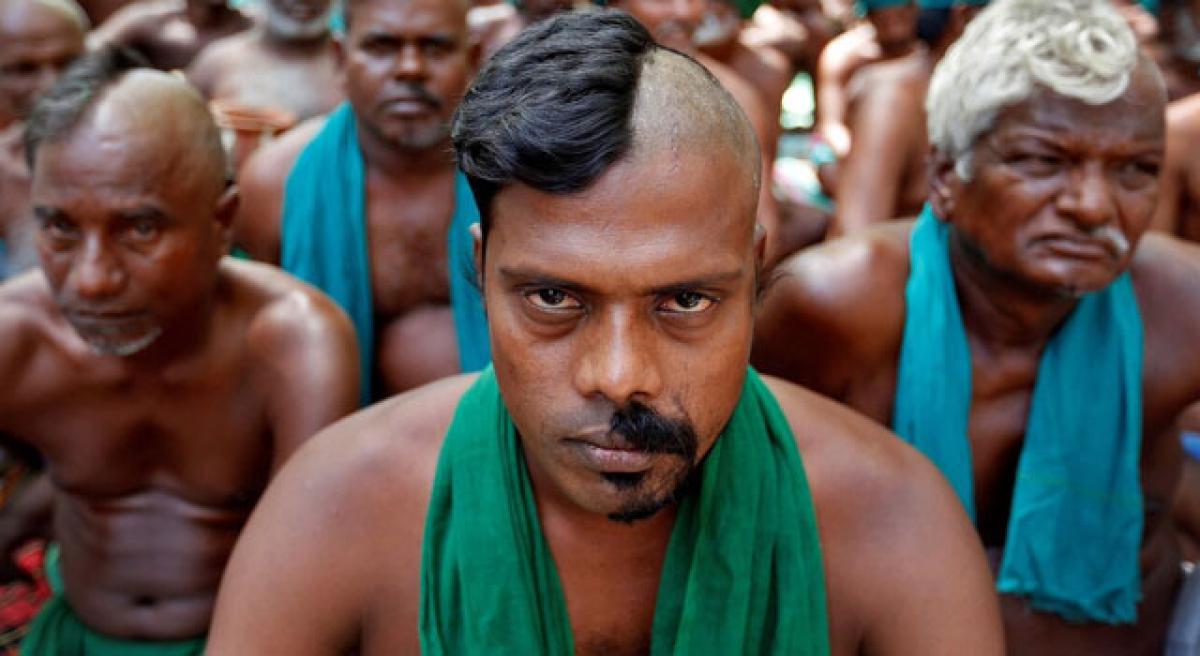Live
- Manchu Vishnu Warns Media Over Family Controversy, Mohan Babu Incident
- Atul Subhash’s Suicide Sparks Outrage; Estranged Wife, Judge Accused of Harassment
- Malaria cases, deaths in India decline by 69pc between 2017-2023: WHO
- ED raids three places in Bengal in online forgery scam case
- Manchu Manoj Questioned by Police Amid Family Dispute
- Bengaluru: IMD Issues Yellow Alert Amid Upcoming Rainfall
- Manchu Vishnu Addresses Media, Clarifies Incident Involving Mohan Babu
- HPCL inks pact with Sea6 Energy to convert seaweed biomass into fuels
- Numaish 2025: Hyderabad’s Grand Exhibition Kicks Off in January – All You Need to Know
- There will be opportunities from every crisis, says CM Chandrababu at collectors' conference
Just In

There are many projections about the future course of the economy with different projected figures of the GDP for the coming years, but the plight of the farming community has not changed much.
There are many projections about the future course of the economy with different projected figures of the GDP for the coming years, but the plight of the farming community has not changed much. The recent farmers’ agitation in Madhya Pradesh and Maharashtra is a testimony to the fact that over production and consequent fall in prices has affected them badly. It is indeed a tragedy that there is no endeavour to understand their plight in the sense that how much money they invest along with their labour and the return they get from the yield.
According to reports, famers have hit the road primarily to seek higher prices and loan waivers. In Maharashtra, the farmers’ problem is linked to a crash in prices for onion, tur dal, tomato, etc. over the past five months or so due to a glut following the after effects of demonetisation, which pushed down wholesale purchases in the open market. Similarly, in Punjab, peasant outfits have claimed financial stress as pressing problem, leading farmer suicides.
All parties, except the BJP, in Maharashtra have supported farmers’ demands including loan waiver, implementation of MS Swaminathan’s recommendations, higher price for milk and raising the minimum support price for produce. The nation-wide protests forced the Shivraj Singh Chouhan to announce a slew of measures, including making purchase of farm produce below the minimum support price a criminal act, set up kisan bazaar (farmers’ market) within the area under all municipal bodies and adopt a system like that of Amul Dairy Cooperatives to purchase milk in the State.
The above scenario does not augur well for a government that claimed to have achieved a lot in the three years in office. Obviously the farm sector needs lot of attention and this has to done at the grass-root level. If the current trend continues, it would not be possible to keep the Prime Minister’s promise of doubling farmers’ income by 2022, nor even by 2027. Moreover, it is a well-known fact that inadequate and untimely rainfall has an adverse effect on farm production and small farmers mostly depend on rain water for cultivation. Added to all this is the increasing costs of inputs which make it extremely difficult to maintain reasonable profitability.
The Union Agriculture Ministry’s roadmap lists initiatives including use of cutting edge technology. The initiatives, no doubt, look quite interesting but what mechanism would be adopted to ensure that these benefit the farming community, specially small farmers, have not been outlined.. The roadmap has not directly called for diversification into value-added crops but decided to strengthen post-harvest infrastructure for food grain, fruits and vegetables. It is necessary to mention here that small farmers have to concentrate on fruits and vegetables and other value added products for higher incomes.
There is also mention of how the government proposes to reach small and medium farmers and help them in increasing production and productivity. However, as the country has to import pulses, it has been decided to increase pulse production to 24 million tonnes from 22.40 million tonnes in 2016-17. If the government helps small and medium farmers in cultivation of pulses, if necessary by arranging loans from banks, the scenario that is being witnessed may not recur.
One has to bear in mind that over production may have an effect on costs and though it may be of great help to the urban population, the fall in prices may affect the farming community. As such, the government has to plan what it would do to tackle over production, specially trying for exports and keeping the rest in warehousing. Here it needs to be pointed out that more warehouses are needed and the government has to rake a call on this.
The overall planning has to be such so that small and medium farmers can live a dignified existence. All subsidies and write-offs should be aimed only for them and not for the bigger farmers. In spite of the roadmap, there is need for a more detailed plan of action regarding the methodology of flow of technology and how small and medium farmers could be rejuvenated. The challenge before the agricultural sector is indeed enormous (INFA)
By Dhurjati Mukherjee

© 2024 Hyderabad Media House Limited/The Hans India. All rights reserved. Powered by hocalwire.com







